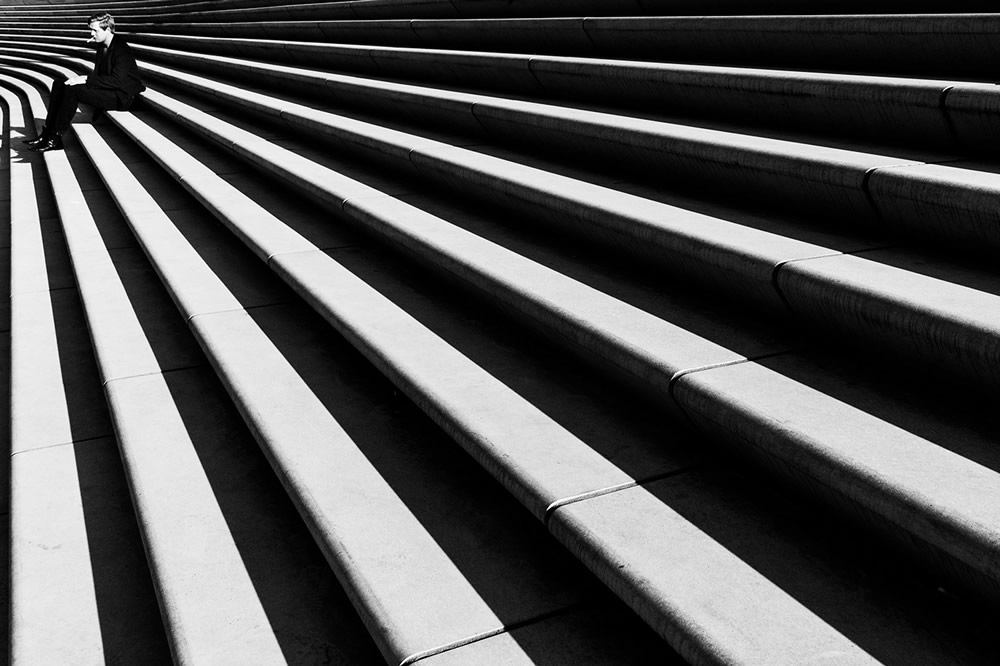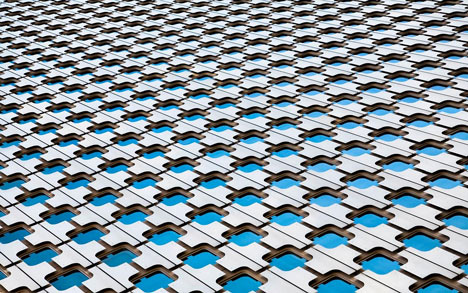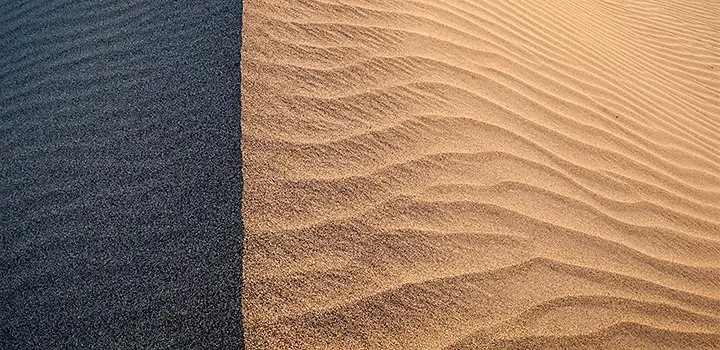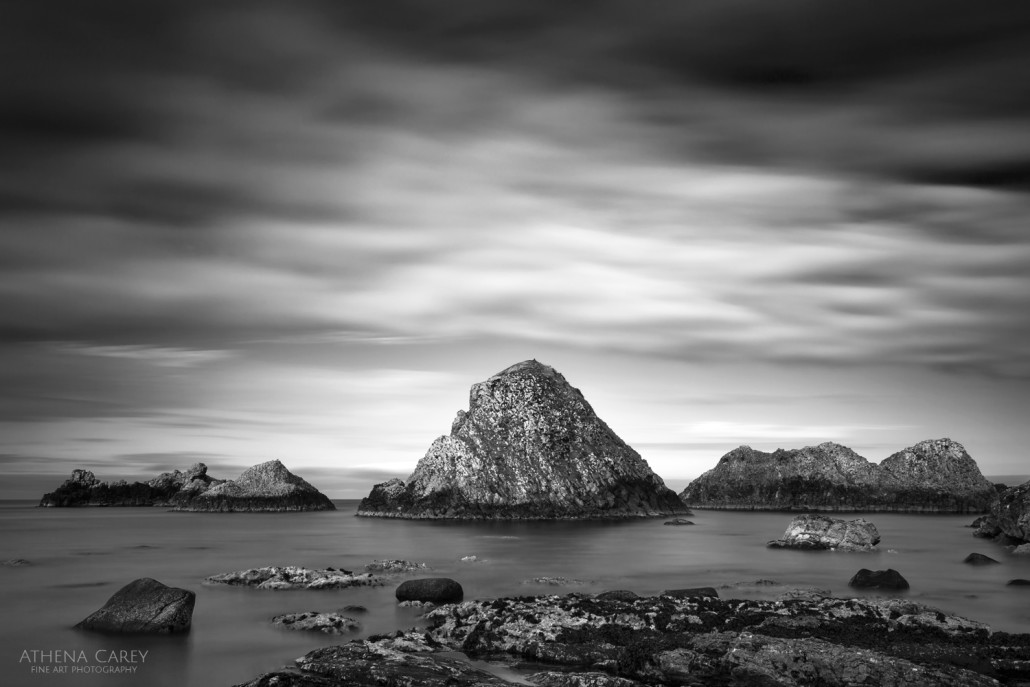
Aaron Siskind

Aaron Siskind

Aaron Siskind

Aaron Siskind

https://www.ideelart.com/magazine/aaron-siskind

https://www.icp.org/search-results/Aaron%20Siskind/all/all/relevant/0

https://www.icp.org/search-results/Aaron%20Siskind/all/all/relevant/0

https://www.icp.org/search-results/Aaron%20Siskind/all/all/relevant/0

https://www.artnet.com/artists/aaron-siskind/north-carolina-28-a-YZlPH9LidacbUGAtaUCVjg2
I found this photo particularly interesting in Siskind’s collection. Compared to his other photographs, the patterns of the blocks, formed by different shapes, create a strong sense of solemnity within an overall chaotic vibe. The torn paper with block images gives an initial impression of messiness, while focusing solely on the blocks conveys a sense of order and structure. These two contrasting concepts merge in this photo, evoking a sense of calmness that arises from the interplay of chaos, structure, and the timeless quality of the black-and-white tone. Among all these elements, I believe the patterns contribute the most to the sense of solemnity. They add texture and establish a sense of orderliness. This order contrasts with the chaos in the photo, and combined with the ancient feel conveyed by the texture and tone, it creates a sense of solemnity.
The list:
The photos all seem to share at least two common traits: texture and tone. I think Siskind uses these elements to create an atmosphere of antiquity. The texture, often seen in missing materials or unique ‘textures’ not originally present on the wall, conveys a sense of age in the photos (#1, #3, #5, #9). Meanwhile, the black-and-white tone evokes a feeling of oldness, as such tones are often associated with the past (all photos). Furthermore, Siskind seems to have a particular interest in depicting the chaotic nature of his subjects—he could have simply photographed a wall in images #1, #2, #4, #5, and #9, but instead, he chose to capture the messy, disorganized state of otherwise ordered, structured objects.
Paragraph of explanation:
The photographer I chose is an abstract photographer who focuses on small details that others might overlook. But why are his photos considered abstract? As mentioned, Aaron Siskind prefers to capture details such as the texture of architecture. In the nine examples, all but picture #6, which focuses solely on architecture, prominently feature texture—his primary focus. Siskind’s style, which I find fascinating and unique, involves zooming in and angling the camera to capture images with elements of order. Yet, by focusing on damaged or broken walls, this sense of order is layered with a feeling of chaos. This approach makes Siskind’s photographs abstract, as he uniquely combines the concepts of chaos and order by zooming in on different architectural traits.
Siskind once said, “When I make a photograph, I want it to be an altogether new object, complete and self-contained, whose basic condition is order,” and “Ambiguity may be the clue: there is the material, and there am I intruding my private intent… strong tensions are inevitable, pleasurable and disturbing.” These quotes align with my interpretation. Siskind, as I discovered, always ensures that there is a layer of orderliness inside his photographs: “…basic condition is order.” He also believes that a pleasurable photograph may be inevitably disturbing—chaotic—matching the chaotic layer in his photographs.
(Photo Quotes, photoquotes.com/author/aaron-siskind)
I chose Aaron Siskind as my inspiration because his vision aligns closely with mine. My goal is to focus on the small architectural details that are often overlooked in daily life. Siskind captures both textures and broader architectural elements, which resonates with my aim to explore the hidden details beneath the surface. Additionally, I believe that my photographs should balance elements of order and chaos, a concept that also appears in Siskind’s work. To adapt his style to my own photography, I would begin by closely observing the patterns, colors, and textures of walls and architecture, seeking out the coexistence of order and chaos. I would then zoom in on these details, experimenting with different camera angles.
The contact sheet:



The Yellow Selections:


I filtered the yellow selections mainly for the theme of architecture. For this selection, I did not choose photos based on my personal vision; instead, I selected them based on a general theme of architecture—where as long as the photos were clearly visible and aligned with the theme, they passed. I also used the yellow selection to differentiate the visually appealing photos, which I then used as a benchmark to determine which sets would move on to the green and red categories. Additionally, the yellow selections helped me refine my ideas for the final red selections—establishing the desired vibe and understanding how the red selections differ from others—by adjusting the contrast, exposure, highlights, shadows, etc., of each yellow photo.
The Green Selections:

I then chose the green selections from my yellow selections. I made these choices based on my vision, aiming to explore the combination of chaos and order, creating a sense of antiquity that ultimately evokes a feeling of solemnity through the merging of these elements. The first six pictures primarily focus on the chaotic aspect, where the chaos—represented by the paintings—overlays the order and patterns of the brick walls. These images demonstrate the texture of Siskind’s photography, showcasing how he often prioritizes the chaotic elements as a visible first layer, with the more orderly aspects forming a foundational second layer. The second-to-last picture also fits this definition. The remaining images emphasize order and structure. Like Siskind’s photos #2, #3, #7, and #8, they place greater emphasis on contrasting chaos and establishing a hierarchy within the ordered or structural elements. Unlike the first set of images, these tend to focus more on order than chaos.
The Red Selections:

Evaluation of the #1 red image:
The dot in the center creates a strong hierarchy, capturing the audience’s attention, while the surrounding lighting and shadows add contrast subtly. This hierarchy conveys a sense of order and structure, guiding the audience to the photo’s focal point. The circular shape of the dot also contributes to this sense of hierarchy. The contrast in lighting and shadows not only adds visual interest due to their structured positioning but also introduces a touch of chaos. The texture of the floor and the black-and-white tone evoke a sense of antiquity. This combination of ancientness, chaos, and order/structure comes together to create a sense of solemnity, aligning with my vision.
I eventually decided to choose the more orderly images as my red selections, as they represent both Siskind’s architectural style and his focus on textures. Additionally, I believe that these two red images, despite their similarity in traits, will be useful in my final presentation because they contain more photographic elements than the others—such as texture, shape, tone, line, and hierarchy.
During the process of taking photos, I gradually realized that my selections of Siskind’s work were not very consistent, which posed a challenge. Which traits or elements in these photos should I prioritize? Sometimes, I captured imposing buildings to reflect the theme of order; at other times, I focused on stable scenes, but I also photographed street art to represent chaos. Because the general themes of the photos I selected from Siskind were not the best matches, it affected the final quality and outcome of my selections. Next time, I will aim to design a better plan, conduct more research, and establish clearer goals.

































 This photo demonstrates a contrast of the colors brown and red. It is taken when I push the chair so that it touches the table. I believe this photo demonstrates some aspect of the drawing as it is indeed a contrast that stands left to right; however, because the chair isn’t straight, it resulted in a way so that the mid-line is a bit off. Thus, I believe this photo in the middle between “worked” and “doesn’t work”. The photo illustrates the element of Alignment & Contrast & Lines.
This photo demonstrates a contrast of the colors brown and red. It is taken when I push the chair so that it touches the table. I believe this photo demonstrates some aspect of the drawing as it is indeed a contrast that stands left to right; however, because the chair isn’t straight, it resulted in a way so that the mid-line is a bit off. Thus, I believe this photo in the middle between “worked” and “doesn’t work”. The photo illustrates the element of Alignment & Contrast & Lines.
 This photo portrays a pink magnet on the whiteboard. Comparing the photo and the image, I believe this photo was pretty successful in mimicking the aspect of having the subject at the upper right corner of the entire photo and having everything else just with negative space. Thus, I believe the photo has “worked” for the image. The photo illustrates the element of shapes initially – but I then thought that a lack of focus in this context would make it more interesting; the element of focus is then added.
This photo portrays a pink magnet on the whiteboard. Comparing the photo and the image, I believe this photo was pretty successful in mimicking the aspect of having the subject at the upper right corner of the entire photo and having everything else just with negative space. Thus, I believe the photo has “worked” for the image. The photo illustrates the element of shapes initially – but I then thought that a lack of focus in this context would make it more interesting; the element of focus is then added.
 This photo portrays a series of puzzles scattered and on top of each other. Comparing the photo and the image, I believe this photo is successful in mimicking the aspect of scattering repetition in this image. I’ve intentionally made the puzzles haphazard and chaotic so that it demonstrates the orderless that was in the image. Thus, I believe the photo has “worked” for the image. The photo illustrates the element of patterns as the surroundings and subjects were designed to match that concept.
This photo portrays a series of puzzles scattered and on top of each other. Comparing the photo and the image, I believe this photo is successful in mimicking the aspect of scattering repetition in this image. I’ve intentionally made the puzzles haphazard and chaotic so that it demonstrates the orderless that was in the image. Thus, I believe the photo has “worked” for the image. The photo illustrates the element of patterns as the surroundings and subjects were designed to match that concept.
 This photo portrays two pipes on the ceiling of an art room. Comparing the photo and the image, I believe this photo isn’t so successful in mimicking the aspect of the structured, ordered, and organized lines in the image because firstly, the lines in the photo only consist of two while the image possesses three; secondly, lines looked a bit curved due to the position and angle I took the picture in; lastly, the overall tone of the photo failed to demonstrate the contrast that I wish it had – looking from left to right, it is Little bit of shadow -> Large area of light – > Medium area of shadow. Thus, I believe the photo didn’t “work” for the image. The photo tries to illustrate the element of tone and demonstrates patterns as well as the lines.
This photo portrays two pipes on the ceiling of an art room. Comparing the photo and the image, I believe this photo isn’t so successful in mimicking the aspect of the structured, ordered, and organized lines in the image because firstly, the lines in the photo only consist of two while the image possesses three; secondly, lines looked a bit curved due to the position and angle I took the picture in; lastly, the overall tone of the photo failed to demonstrate the contrast that I wish it had – looking from left to right, it is Little bit of shadow -> Large area of light – > Medium area of shadow. Thus, I believe the photo didn’t “work” for the image. The photo tries to illustrate the element of tone and demonstrates patterns as well as the lines.
 Similar to photo #4, this photo portrays a file container in the front view. Comparing the photo and the image, I believe this photo is some-what successful in mimicking the aspect of structured lines in the image. The two sides of the file container correspond with the two lines in the image, but I have to blur the photo because of the crowded surroundings around the file container – therefore, I believe the photo, to a certain degree, has “worked” for the image. The photo illustrates the elements of patterns, lines, and focus.
Similar to photo #4, this photo portrays a file container in the front view. Comparing the photo and the image, I believe this photo is some-what successful in mimicking the aspect of structured lines in the image. The two sides of the file container correspond with the two lines in the image, but I have to blur the photo because of the crowded surroundings around the file container – therefore, I believe the photo, to a certain degree, has “worked” for the image. The photo illustrates the elements of patterns, lines, and focus.
 This photo portrays a light source front view. Comparing the photo and the image, I believe this photo is successful in mimicking the aspect of the attention-grabbing shape in the image. The light by itself seemed dull and uninterested. Therefore, I blurred it so that the colors of the light and its contour blended together into one thing, creating a hierarchy in the center. Thus, I believe this photo has “worked” for the image. The photo illustrates the elements of shapes and focus.
This photo portrays a light source front view. Comparing the photo and the image, I believe this photo is successful in mimicking the aspect of the attention-grabbing shape in the image. The light by itself seemed dull and uninterested. Therefore, I blurred it so that the colors of the light and its contour blended together into one thing, creating a hierarchy in the center. Thus, I believe this photo has “worked” for the image. The photo illustrates the elements of shapes and focus.
 This photo portrays a sticker. Comparing the photo and the image, I believe this photo is somewhat successful in mimicking the aspect of the image because it does indeed have the shape and look of the image, but due to the angle problem, it made the photo look a bit weird. Thus, I believe this photo, to a certain degree, has somewhat “worked” for the image. The photo illustrates the elements of lines and patterns.
This photo portrays a sticker. Comparing the photo and the image, I believe this photo is somewhat successful in mimicking the aspect of the image because it does indeed have the shape and look of the image, but due to the angle problem, it made the photo look a bit weird. Thus, I believe this photo, to a certain degree, has somewhat “worked” for the image. The photo illustrates the elements of lines and patterns.
 This photo portrays a blanket. Comparing the photo and the image, I believe this photo is successful in mimicking the aspect of repeated circles. The repetition of the holes corresponds with the circles in the image. Thus, I believe this photo has “worked” for the image. The photo illustrates the elements of shapes and patterns.
This photo portrays a blanket. Comparing the photo and the image, I believe this photo is successful in mimicking the aspect of repeated circles. The repetition of the holes corresponds with the circles in the image. Thus, I believe this photo has “worked” for the image. The photo illustrates the elements of shapes and patterns.
 Similar to photo #9, this photo portrays another blanket. Comparing the photo and the image, I believe this photo is successful in mimicking the aspect of the grid-look image. Because I believe the blanket by itself is boring to look at, I found that I could actually photo the two layers of the blanket and create a double layer of grid shape. Thus, I believe this photo has “worked” for the image. The photo illustrates the elements of patterns and shapes.
Similar to photo #9, this photo portrays another blanket. Comparing the photo and the image, I believe this photo is successful in mimicking the aspect of the grid-look image. Because I believe the blanket by itself is boring to look at, I found that I could actually photo the two layers of the blanket and create a double layer of grid shape. Thus, I believe this photo has “worked” for the image. The photo illustrates the elements of patterns and shapes.
 This photo portrays a light bulb. Comparing the photo and the image, I believe this photo is successful in mimicking the aspect of the line crossing over the left-down corner to the upper right corner. During the process of capturing this photo, I discovered that focusing on the light could make the surroundings black, demonstrating a contrast of black and white, aka, tone. I used the same angle approximately and created a similar look. Thus, I believe this photo has “worked” for the image. The photo illustrates the elements of line, focus, and tone.
This photo portrays a light bulb. Comparing the photo and the image, I believe this photo is successful in mimicking the aspect of the line crossing over the left-down corner to the upper right corner. During the process of capturing this photo, I discovered that focusing on the light could make the surroundings black, demonstrating a contrast of black and white, aka, tone. I used the same angle approximately and created a similar look. Thus, I believe this photo has “worked” for the image. The photo illustrates the elements of line, focus, and tone.
 This photo portrays a table knife. Comparing the photo and the image, I believe this photo is not successful in mimicking the aspect of the attention-grabbing shape in the image. I blurred the subject so that it doesn’t look dull. However, because of the wrong angle, I took the photo in, it does not mimic the image, and it looks terrible. Thus, I believe this photo has not a single bit “worked” for the image. The photo illustrates the elements of line and focus.
This photo portrays a table knife. Comparing the photo and the image, I believe this photo is not successful in mimicking the aspect of the attention-grabbing shape in the image. I blurred the subject so that it doesn’t look dull. However, because of the wrong angle, I took the photo in, it does not mimic the image, and it looks terrible. Thus, I believe this photo has not a single bit “worked” for the image. The photo illustrates the elements of line and focus.
 This photo portrays the wooden wall. Comparing the photo and the image, I believe this photo is successful in mimicking the aspect of the haphazardness in the image. The wooden wall, like the image, creates a texture of rough, fabric like look. Thus, I believe this photo has “worked” for the image. The photo illustrates the elements of texture.
This photo portrays the wooden wall. Comparing the photo and the image, I believe this photo is successful in mimicking the aspect of the haphazardness in the image. The wooden wall, like the image, creates a texture of rough, fabric like look. Thus, I believe this photo has “worked” for the image. The photo illustrates the elements of texture.






Recent Comments